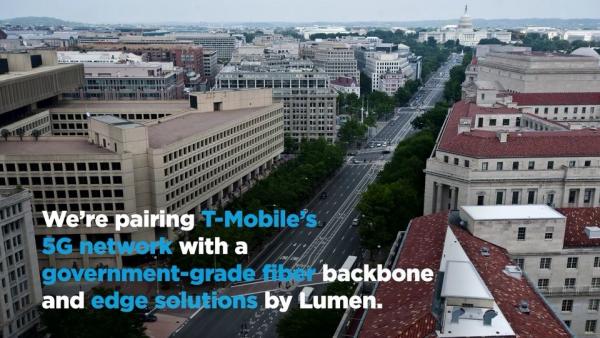Lumen Lede
Lumen and T-Mobile Come Together to Create Modern Networks
Traveling to Washington, D.C., is an amazing experience for any history buff. Memorials to civilization-defining events lie on nearly every city block. For those who are more technologically minded, the historical attractions are no less impressive. Engineers from around the globe are drawn to D.C.’s world-class museums, many of which highlight our great nation’s history of innovation.
For tech-minded visitors looking for a more off-the-beaten-path attraction, there is a terrific museum that chronicles the history of the U.S. Postal Service (USPS). Visitors to the National Postal Museum in Northeast D.C. gain a new perspective on the phrase “information technology” as they review the chronicle of ingenuity that kept this country connected and thriving during every phase of its history. (More on that long history of innovation later.)
Many of the historical shifts in technological achievement are commonly viewed as periods of “industrial revolution.” Today, we stand on the edge of the next great era of technological change -- a 4th Industrial Revolution. To truly harness the power of this era, organizations must excel at acquiring data from all endpoints; analyzing it for new insights; and taking action with software.
One lesson that recent history has taught us is that hybrid networks are a critical foundation for data acquisition. Companies are looking for new methods to combine hybrid technologies into a more flexible model.
Network Innovation
The more connected and reliable a network is, the more innovation it can unlock. For this reason, many enterprises and government agencies consider the first critical step to be the modernization of their networks – aiming to reliably acquire all the data they have under their control.
This three-phase innovation cycle, built upon new models for hybrid networking, is the basis of the strategic alliance between Lumen and T-Mobile. Earlier this year, we jointly announced how our product teams would be collaborating around the next phase of digital business. The innovations we’ve developed have been in three key areas:
- Peering-optimized Edge Computing where Lumen Edge Computing Solutions are positioned in latency-optimized locations for T-Mobile for Business customers.
- Fixed Wireless Access where managed, diverse connections across Lumen and T-Mobile can provide resilient links to mission-critical software running at the edge.
- Private Mobile Networks where single-tenant mobile networks are designed to provide flexible and converged connectivity across a wide range of smart devices.
Our two companies, each with a long history of innovation across wireless and fiber network technologies, are starting to see momentum in the market across these three innovation areas. In July, we jointly announced fixed wireless access services powered by Lumen and T-Mobile have been officially added to the 15-year, $50 billion Enterprise Infrastructure Solutions (EIS) contract vehicle available to government agencies through the General Services Administration (GSA).
Working with Government Agencies
And the momentum continues. As mentioned above, there might be no better example of sustaining innovation through the first, second, third and fourth “industrial revolutions” than the U.S. Postal Service. Through snow, wind, and rain – using cranes, trains, and pneumatic tubes – the USPS has fulfilled its mission faithfully for hundreds of years.
Working together with T-Mobile, Lumen was awarded a contract with the USPS to begin the modernization of their network infrastructure with a fully-managed solution that leverages both wireline and wireless access methods.
Zain Ahmed, senior vice president of Lumen public sector, recently observed that "Lumen is helping the U.S. Postal Service accomplish its mission by bringing innovative solutions to optimize its network availability, performance and cost efficiency while providing real-time network monitoring and analytics."
The more operational data the USPS can acquire, the more challenging problems it can solve through software-defined analysis and action. USPS’ history of innovation is building a new foundation, this time powered by co-innovators like Lumen and T-Mobile.
As historians like to say, “Study the past if you would define the future.” And in many ways, this is the essence of modern digital business.
Whether strolling through the Smithsonian museums or parsing terabytes of IoT sensor data, keeping one eye on the past and the other eye on the future has proven to be the inspiration for many great innovations.







